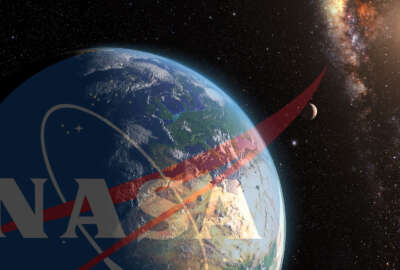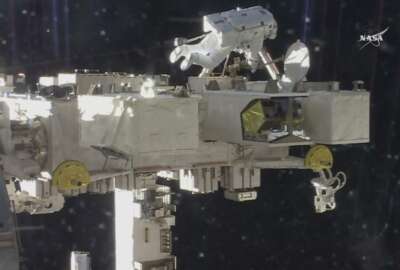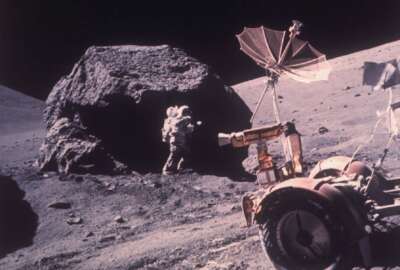
Astronaut foresees coming boost in NASA interest
NASA has fostered a less dramatic public image over the years, pursuing research over exploration. But it may be preparing to invade the mainstream once again.
When Apollo 11 landed on the moon in 1969, it captured the collective imagination of an entire generation. But since that time, NASA has fostered a less dramatic public image, pursuing research over exploration. But it may be preparing to invade the mainstream once again.
“Human spaceflight has taken a bit of a quieter stance over the last decade or so, not as visible to the human public as it used to be. But we’re at a very exciting time,” said Scott Tingle, astronaut, on Agency in Focus: NASA. “We’ve got the Commercial Crew coming up, we’ve got [the International Space Station] that’s going to continue to operate, which we need to continue to operate. We’re building Gateway. We need that to continue. We’re going to start exploring the moon and more locations than just the few locations that we did before. And we’re going to use the Gateway to launch some new vehicles off to Mars and deep space exploration. So there’s a lot of exciting things.”
Tingle said he’s seen a drop off in interest in NASA and the space program among older Americans, who he said have more pressing priorities for government on their minds. But he said he’s found a consistent bastion of enthusiasm around the agency and its programs in the schools. Kids always have an interest in space.
And Tingle was no different. As a kid, he said he remembers seeing Neil Armstrong’s moonwalk. From that point on, he was hooked. He took an interest in engineering, science and flight, as he mapped out his path to space.
“For me, the end goal was always the astronaut corps,” Tingle told the Federal Drive with Tom Temin. “Every decision I made, I made because at that moment in time, that near-term path was going to be very rewarding for me, whether I made it to the end state or not. But I did it with the end state in mind.”
For example, it was tough for him to decide whether to earn his Ph.D., or become a Navy pilot. But in the end, the Navy afforded him more opportunities to pursue his end goal.
For one thing, he had few resources when he was young. Despite working two jobs in high school, his savings weren’t enough to put him through college. Joining the reserves at 18 helped him pay for college and grad school. Then, after working as an engineer for a few years, he decided to go on active duty and fly planes. From there, he was able to enter the astronaut corps.
But the Navy provided Tingle with more than just a path to being an astronaut.
“The experiences were phenomenal, not just from a technical or systems perspective, but operationally, having to work with diverse teams and lots of people,” he said. “And sometimes you don’t have all the data. We like to work in the known-known box, where the decisions are easy because you kind of know what the right answer is. But sometimes the known-unknown, you kind of get more into management, you have to think a little bit, but it’s still fairly easy. In aviation, a lot of times, we work in the unknown-unknown box, and we have to get very comfortable saying, ‘I don’t know if it’s left or right, but I’m going right, and we’ll see what happens.’ And you make a decision.”
It also, in a strange way, prepared Tingle for the experience of returning to Earth after spending extended amounts of time in space. There are a lot of conditions that astronauts have to deal with immediately upon returning to Earth. He said the inner ear is not aligned, the spine is elongated, and the big muscles function but those responsible for fine motor control suffer. It requires a certain kind of focus to get your body to operate, he said.
“I equated that to flying planes aboard aircraft carriers at night,” Tingle said. “Sometimes you don’t know which end is up. You’re in the clouds, all you can see is a light bobbing around in the middle of the ocean, and you’re supposed to land on it. You really have to focus. And if your middle ear is telling you you’re sideways but your instruments are telling you you’re straight, which is exactly how you feel when you land and come out of the capsule, you have to disconnect your inner ear and start believing your interments.”
Another example of readjustments he had to make involves falling objects. The natural instinct, when someone drops something, is to bend down and try to catch it before it hits the ground. But in space, when you drop something, it doesn’t fall. So it takes time to overcome that stoop-and-catch instinct. Then, after returning to Earth, you have to remember gravity is in control again.
But overall, he said, it’s easier returning to Earth. Those instincts already exist, so resurrecting them is far easier than building new ones from scratch.
Copyright © 2025 Federal News Network. All rights reserved. This website is not intended for users located within the European Economic Area.
Daisy Thornton is Federal News Network’s digital managing editor. In addition to her editing responsibilities, she covers federal management, workforce and technology issues. She is also the commentary editor; email her your letters to the editor and pitches for contributed bylines.
Follow @dthorntonWFED





